Ambush in the Cambodian Jungle
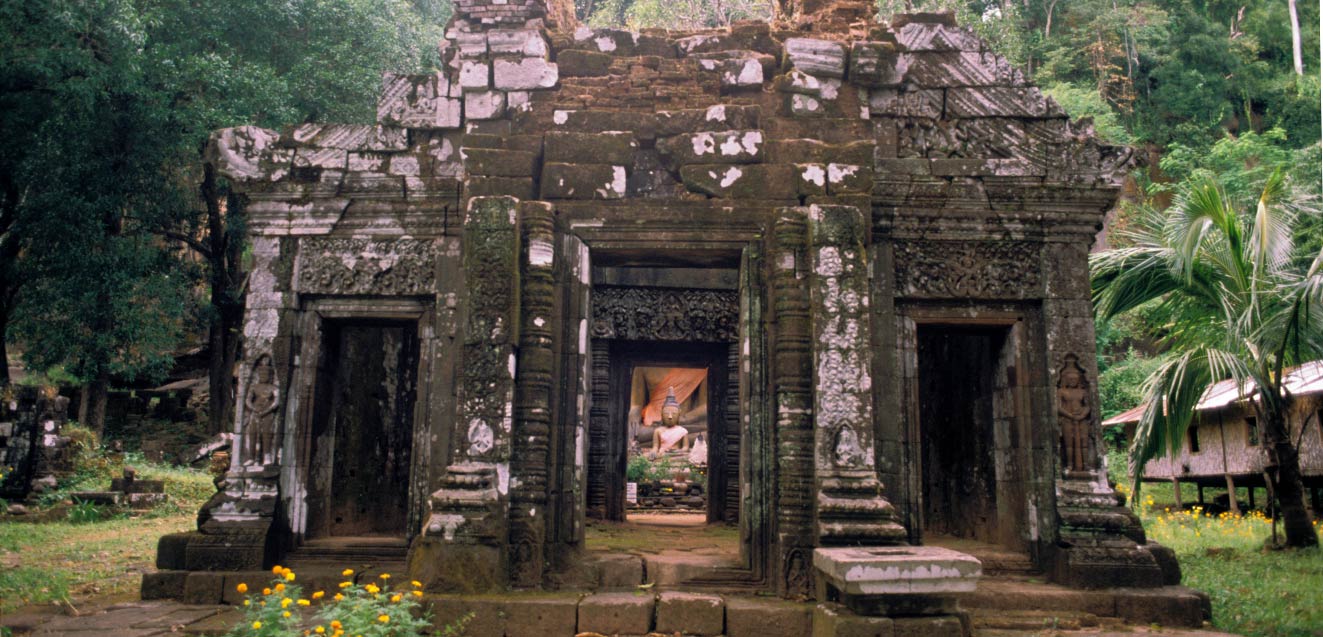
It was 2:00 am and I had just arrived at the airport in Siem Reap, Cambodia. The humidity had drenched me by the time I reached my bag and plowed into the pushing, shoving, shouting mass of cabbies and tuk-tuk drivers. It was local Cambodian guide Nok who calmly threaded his way through the frenzy, took my bag, and said, “Your ride is here, boss.”
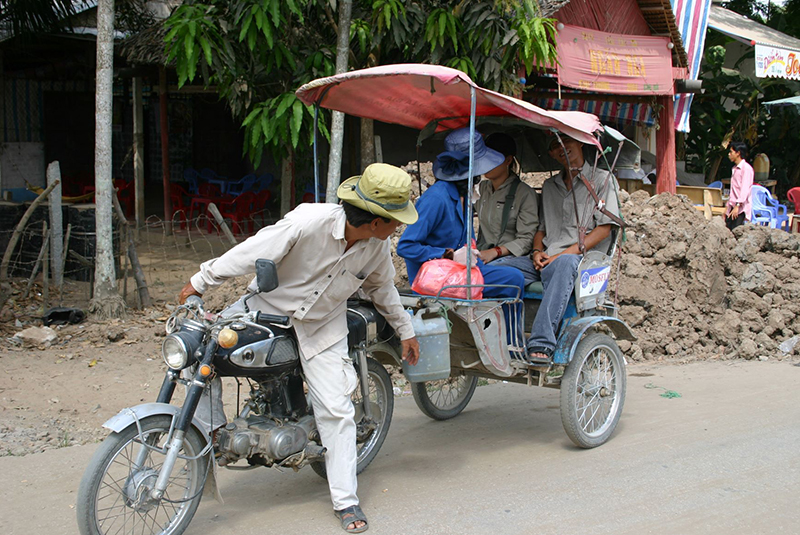
I always seem to meet a Nok when I need one. He was one of those self-assured guys who know the town and will take you either to the tourist spot or the darkest corner, whichever you prefer. Nok was stick thin in that manner of those who have little protein in their diet, but immaculately dressed in a shirt that looked freshly pressed while I was wearing a damp rag. He had a way about him that convinced me to hire him on the spot.
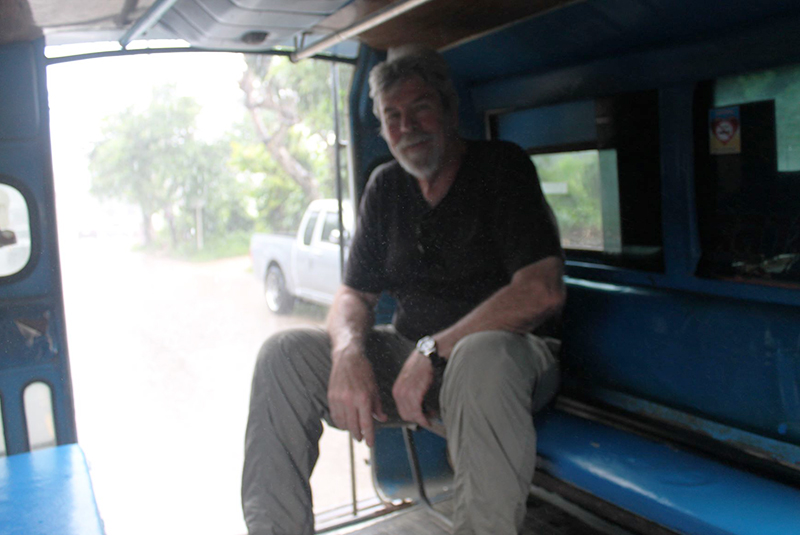
Also, he drove a tuk-tuk, which I always prefer to a taxi. It lets you smell and taste the city. And it’s easier to exit should you need to run for your life.
I thanked Nok for his rescue and told him the address of my hotel. He said it was overpriced and not very clean, and that he could take me to a better place for less money. That is what I like to hear.
For the next five days, Nok became my driver-guide. Like so many street hustlers I have met throughout Southeast Asia, Nok seemed to work around the clock, and probably drove for someone else looking to get around Cambodia with a local expert when not working for me. He showed up three days in a row in the same clothes, his hair resembling an exploding muskrat, with a green plastic bottle of ginseng balanced on the console and a dangling amulet of the Buddha swaying back and forth from the mirror. He drove with one hand on the bars while talking on his cell and smoking a cigarette with the other, all the while giving me a running commentary of what we were seeing.
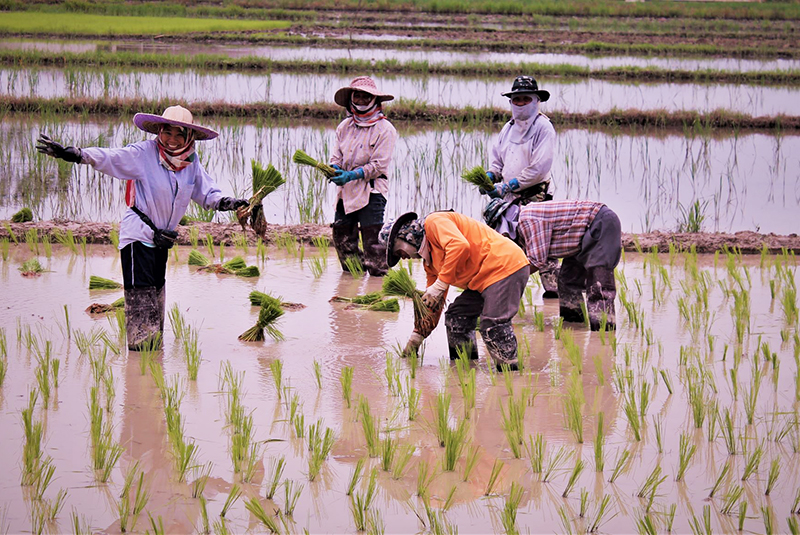
We wandered far in his tuk-tuk. I watched people bent in half under a Van Gogh sun, harvesting rice the same way their ancient ancestors had done. I saw enormous pigs, sometimes two at a time, in wicker baskets on the backs of tiny motorbikes half their size, being taken to the market. I watched a herd of water buffalo taking a most joyous mud bath, in so deep that only their nostrils and horns showed. In local markets, I watched biting fish jump at customers and was served local whiskey made with cobra venom.
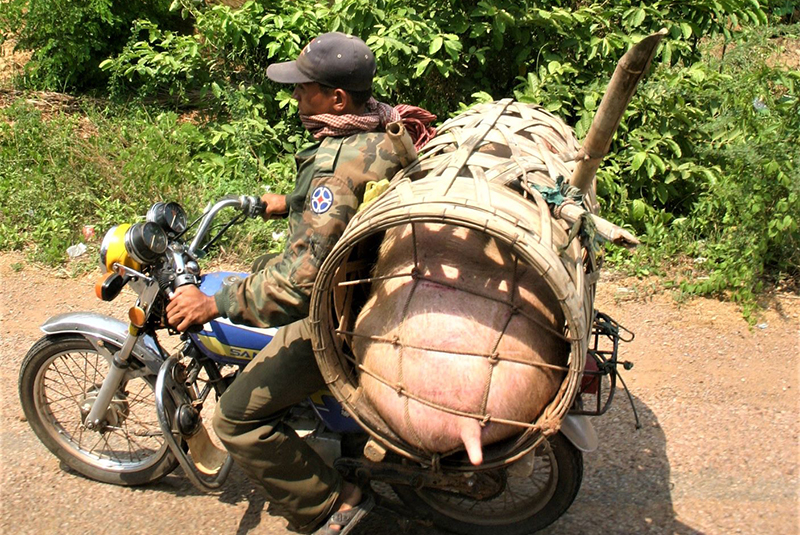
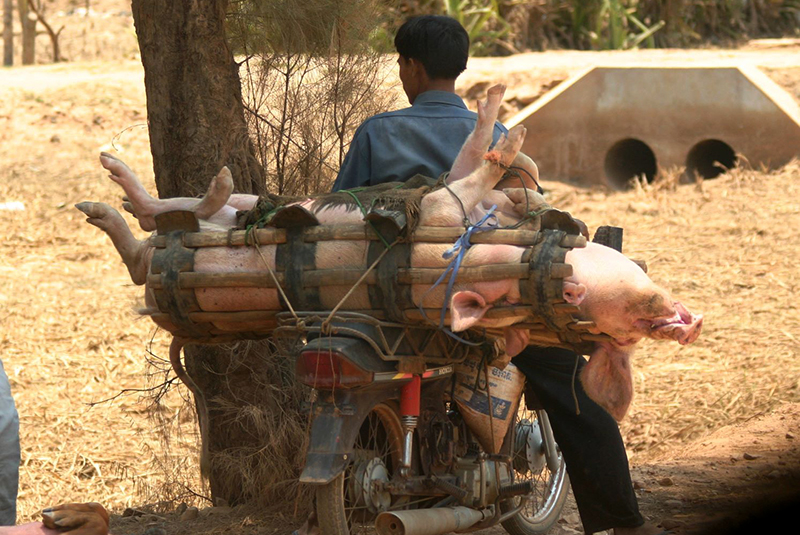
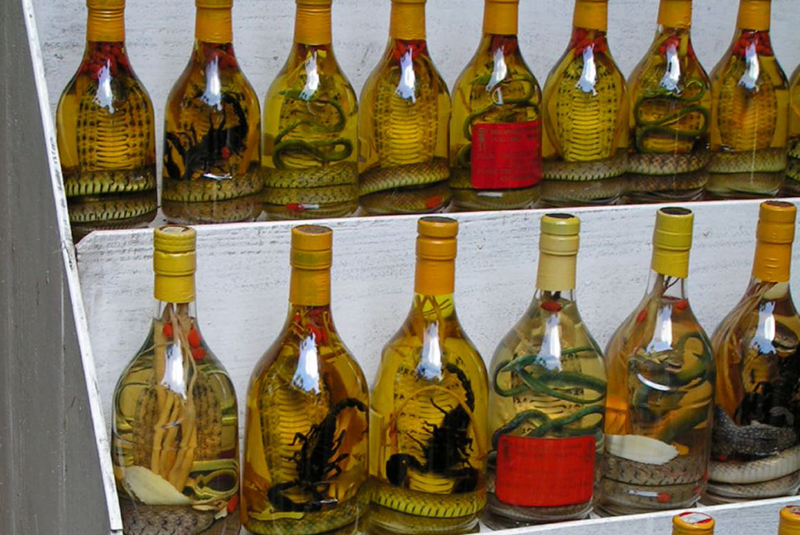
We went deep into the jungle on our Cambodian adventure where we had to walk claustrophobic paths while clinging vines grabbed us like ghoulish octopi and were rewarded by visits to villages so remote as to have little contact with the surrounding world. We visited jungle shrines filled with smiling Buddhas and sat with a Buddhist nun in her temple cell who served us tea but would not speak.
Nok always took food offerings for the village headman and knew everyone, no matter how remote the location. He took me to temples that pre-dated the Khmer empire, that while crumbling, were still high examples of an artistic and sophisticated culture. He took me back in time to places a tourist could not go and opened a land of myth and legend to me.
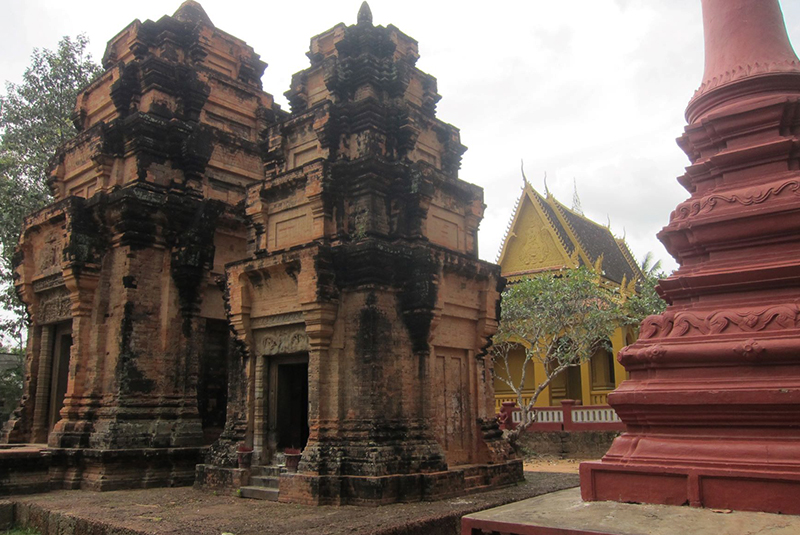
He was of and from the jungle and he moved with the grace of a cat. He was at ease among tribal people I would call almost feral, but he operated just as easily with me in the city. He had never traveled farther than the capitol of Phnom Penh but knew a surprising amount about the modern world gleaned from his clients. He was street smart and quick-witted. He laughed often and when he did, a brown line of betel nut juice would flow down his chin.
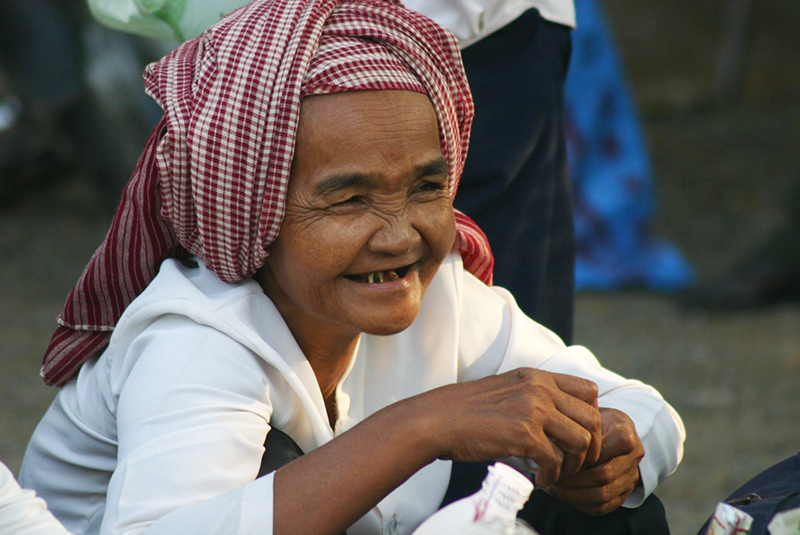
With Nok, I felt instantly at ease and dropped my guard. Each day our conversations became less formal and he began to ask personal questions, which I welcomed. One day, over a lunch of chicken satay and beer, Nok asked if I would like to visit his village. I had been hoping for such an invitation but had not felt right asking. I immediately said yes.
The next morning, we left Siem Reap early. We quickly exited the highway for a dirt road and soon after pulled over to allow a fascinating sight to pass. Some kind of a vehicle—I think it was an aging Ford, but there was little of the original car left—was being pulled by a water buffalo. It had no engine, but the buffalo had reigns running back to a man in the driver’s seat who drove it like a wagon. The doors and windows were also missing, and besides the seven people seated inside, I counted at least six more hanging onto the sides as it crept past us. Nok said it was the local taxi. I was so astonished by this seemingly common method of getting around Cambodia that I forgot to even raise my camera to record it.
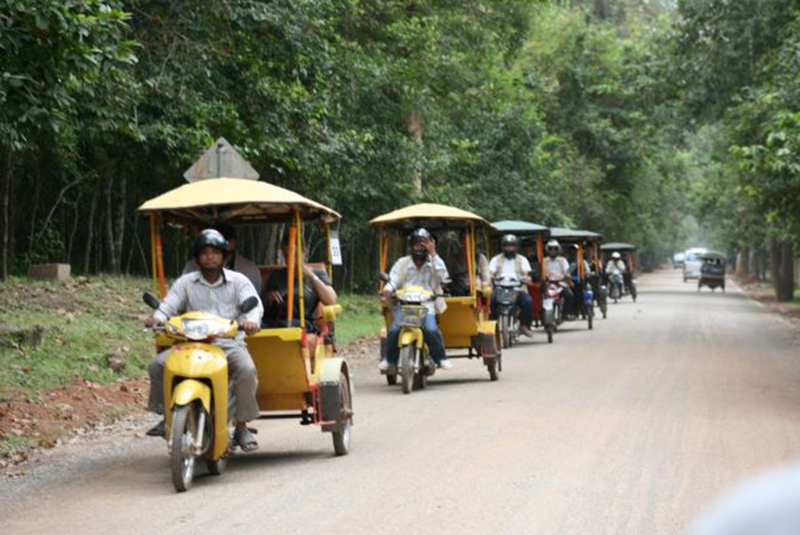
Although it is a cliché, I have found time and again that the jungle telegraph not only exists but is extremely efficient and accurate. No matter how remote the village, society, or culture, news of the arrival of an outsider always precedes the actual visitor. So, it was in this case. While our dirt road quickly deteriorated into an overgrown path so dense it was almost nighttime dark, children started appearing out of the thick jungle foliage. They ran alongside us, sliding their outstretched hand across my own, or fist-bumping me on the run—which caused me to wonder just how remote we could be if they knew about fist-bumping?
After a few miles, we entered a village clearing where on open-air school room was quickly filling with children. Nok stopped the tuk-tuk, turned to me, and said as if asking a question, “You teach them something, OK?” He had ambushed me, but not only did I not mind, I was flattered. I looked around at the eager faces and it hit me that I might very well be the first outsider some of these kids had encountered. Nok told me the village had built the makeshift classroom, stocking it with plastic chairs and a donated blackboard. Parents took turns imparting what they knew to the kids but there were no actual teachers.
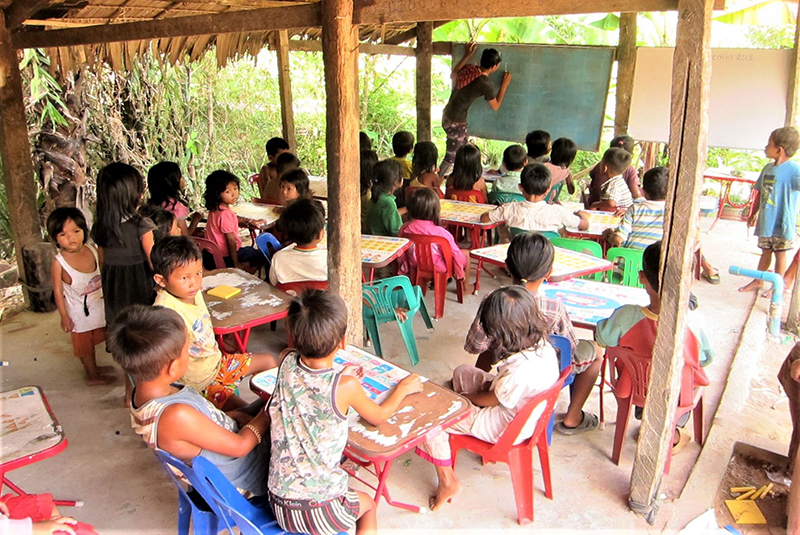
I was at once honored and terrified. What could I give them of any value? I was not a teacher, but the hungry faces watching me suddenly turned me into one. Improvising on the spot, I drew an outline of the United States. This did not register with any of them. Next, I tried to draw a facsimile of the world. That got me nowhere also. Finally, I just told them that I had come from many days of walking to the west. They understood that.
By now some parents had gathered and I realized they were as anxious for information as their children. One at a time, hands were raised to be called on and Nok translated. Their questions were all personal. Did I have family? Why was I traveling without them? What was I doing there? For people who rarely left their village, travel for pleasure was beyond their comprehension. The children all wanted to know about my own children and were dumbfounded when I said I did not have any of my own.
I quickly realized that the only chance I had as a teacher was to keep it simple, so I showed them photos of my wife and dog. Then things began to flow. We talked about family and dreams, which for most of them extended no farther than the boundary of their village. One small girl showed me an ancient magazine with a photo of a female doctor in it and told me she wanted to be like the lady in the picture. I told stories about my travels and places I had seen in the world and they sat and listened, open-mouthed. I hoped it made some sense to them. Even if they learned nothing, I felt that I had entertained them, so as far as I was concerned, it was a perfect day.
When the shadows began to grow long, Nok said it was time to go and thanked me profusely for speaking with the children. He told me that he had brought only one other client to his village, a teacher from France who had obliged them with a lesson. When I asked why he had brought me, he said, “You very different,” and I took that as a great compliment. Back at my hotel, I told him it was I who needed to thank him for such a day.
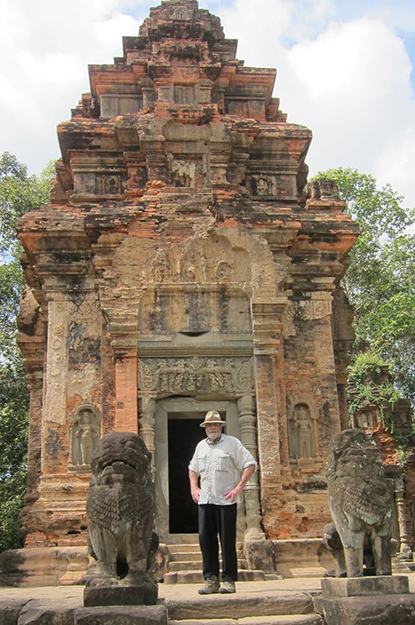
About a month after I returned home, I received an email from a woman I had never heard of. It seems that she teaches at a school a few miles from Nok’s village. She had gotten my address from Nok because recently a handful of children from his village had started walking to her school, when they had never done that before. Their round trek was several miles.
She wrote me that when she asked the children why they had suddenly started walking to her school, they told her that they wanted to learn things like the “American” man had told them.
Reading her words, I was instantly transported back to that jungle schoolroom, those earnest students, their impassioned questions. And I thought: Sometimes our journeys have detours we could never have imagined when we began—and sometimes these become our most precious souvenirs.
# # # # #
To find out about the many ways to explore Cambodia, or our any of our other far-flung destinations, give GeoEx’s travel specialists a call at 888-570-7108.

